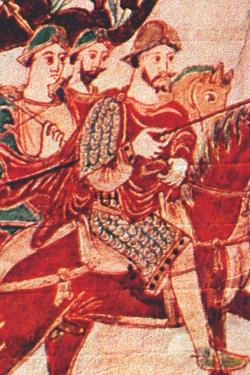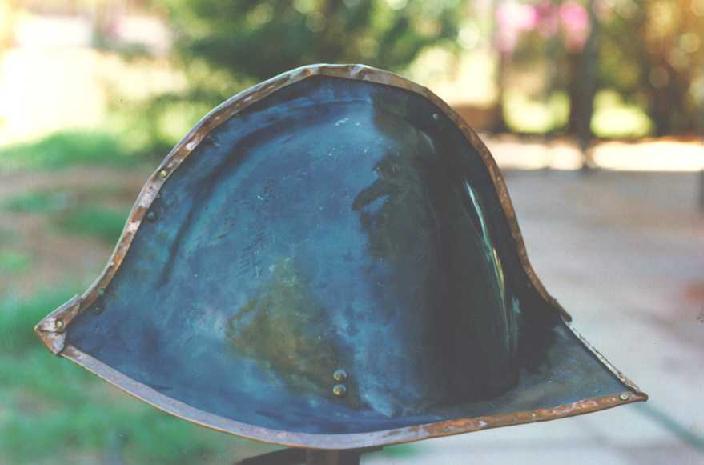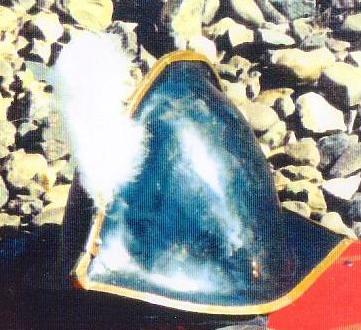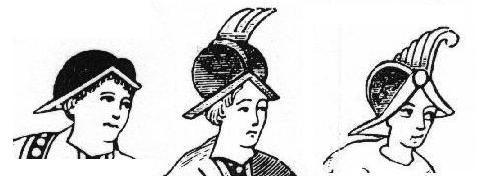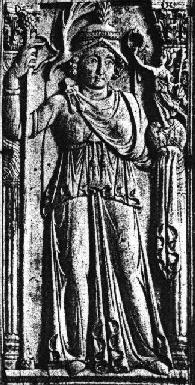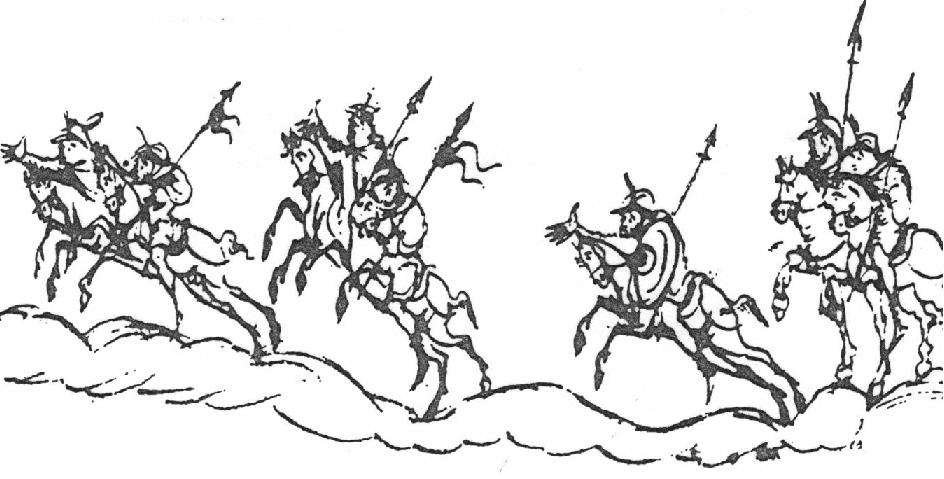This helmet is based on many illustrations, mostly from Frankish sources. However, the earliest helmets of this type I have seen illustrated are late Roman. These helmets are first shown in about the 4th century AD, and the latest representation I have seen dates to the mid-late 11th century. They include the Golden Psalter of St Gallen (c. 800 AD), the Utrecht Psalter and the 9th century Gospels of Lothair and Bible of Charles the Bald.
Due to the fact that no examples of this helmet have ever been recovered, there is some doubt as to whether they were ever used in Carolingian times. It has been suggested that all illustrations of this period were merely copied from earlier Roman originals, and it is true that in many examples the armour worn is antique for the 9th century. However, the Golden Psalter in particular shows soldiers wearing these helmets combined with equipment which accords in every respect with other contemporary representations, and with what is known to have been used at the time.
Additionally, the phenomenally specific detail of the Golden Psalter (for example, it shows the garters on the hose the soldiers wear, and the details of the rear of shields), makes it hard to dismiss. Interestingly, at least two soldiers in the Psalter are shown dead, with their helmets lying nearby. This suggests that the helmets were not strapped to the head. It also allows a view of the inside of the helmet, and from an angle not normally available. Another interesting detail is that the dead soldiers appear to be wearing arming caps - one of the very few contemporary pictures to show this - in fact, the only instance I have ever seen apart from the 16th century paintings of Albrecht Durer. Below are more examples of the same type of helmet. |
